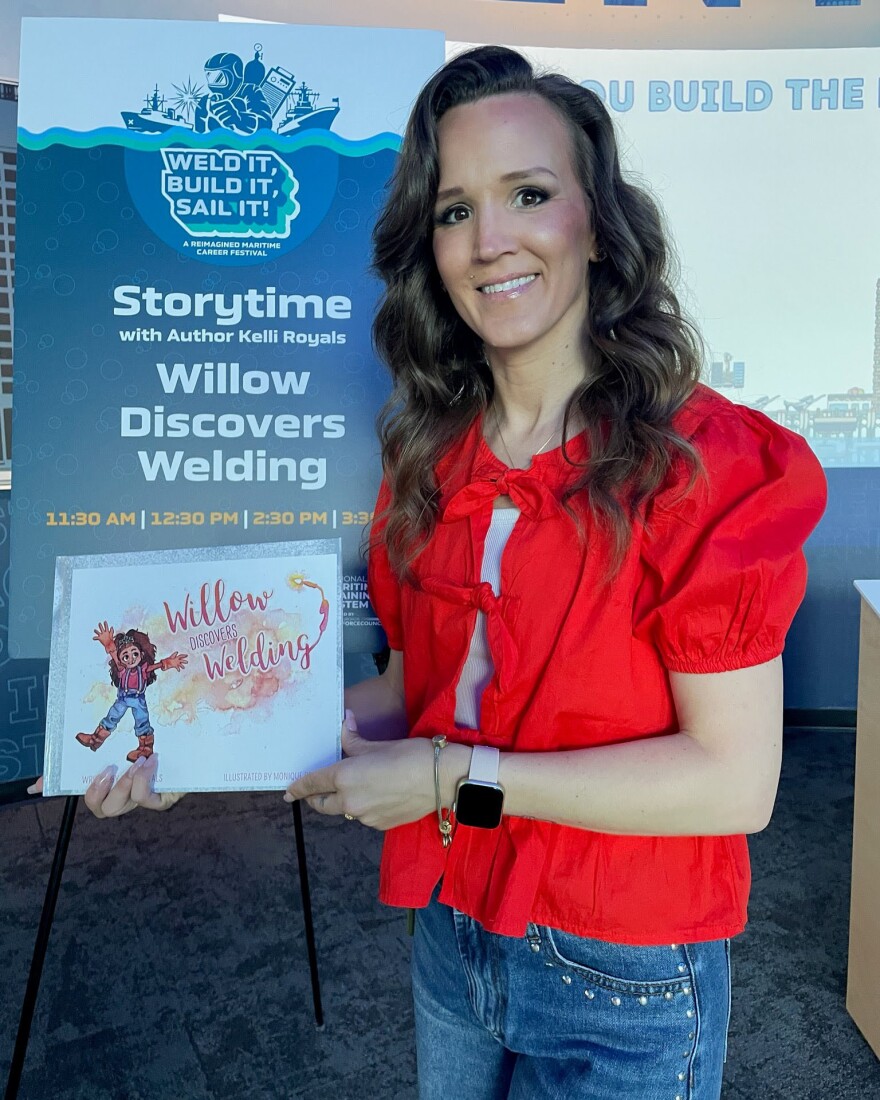Xavier Latimore came to Norfolk, Virginia from California roughly two years ago. He enrolled at Old Dominion University to earn a degree in marine biology. Then the bills started to pile up.
"I moved out here to take care of my grandma. I thought it might work out - me going to college and trying to still figure it out - but bills are a thing. And, you know, finances are always going to have to be put over education," Latimore said.
Latimore left Old Dominion and took a welding class at a community college, which is how he ended up at a job fair looking for an entry level position in the shipbuilding industry.
"Welding isn't something that I'm forcing myself to get into, it's not something that's like the last resort, but it's something that I'm getting into because I realized that when I got into welding, I did enjoy it," he said.
Industry groups are trying to attract more people like Latimore into the shipbuilding profession. And they're getting creative as their number one client - the U.S. Navy - pressures companies to increase production of new ships, while also addressing a growing maintenance backlog.

The job fair - at the Nauticus, a maritime museum - was designed not only to draw people seeking employment, but also to promote the industry to families.
At one booth, children's author and former professional welder Kelli Royals read from her book called Willow Discovers Welding.
She said that by the time people reach high school, many have already decided to go to college rather than pursue the skilled trades.
"I wanted to put it in front of children when they were little to spark that idea and the ability to grow that idea, rather than wait until they've already decided," Royals said.
"It's really great that we're starting even younger and younger," said Josh Sheffield of the Hampton Roads Workforce Council, which works with companies to provide internships, training, and other services to bring people into the shipbuilding industry. "It's an ongoing process that we're going to have to do for many, many years to fill all the jobs that we need here in the region."
Hampton Roads is home to the Norfolk Naval Shipyard - a major Navy maintenance hub - as well as Newport News Shipbuilding. Owned by Huntington Ingalls Industries, the Newport News facility is the only shipyard set up to build the new Ford Class Aircraft carriers and one of only two places to build nuclear subs.
The Trump Administration is pushing a grand plan to revive commercial shipbuilding while increasing the size of the Navy. A bipartisan group of lawmakers has also introduced the Shipbuilding and Harbor Infrastructure for Prosperity and Security (SHIPS) for America Act to spur more ship building.
The construction of new ships has consistently been behind schedule.
The recently appointed Secretary of the Navy, John Phelan, gave himself 100 days - until July - to draft a blueprint for revitalizing the industry.
"We spent the last ten years teaching people how to code. We're going to spend the next 10 years teaching them how to use their hands," Phelan said during a visit to Newport News Shipbuilding, "That is going to be a critical skill set. And I believe that we can create very good careers."

But rebuilding the workforce will likely take longer than a decade, said Jonathan Page, a University of Michigan engineering professor. He said pay hasn't kept pace with other trades.
"An electrician could earn two or three times the rate just putting outlets in somebody's house versus installing cables on a ship," Page said.
Page worked in nearly every aspect of ship maintenance and design over a 21 year Navy career. He saw the aftermath of the industry being hollowed out in the 1990s. After the Cold War, industry and the Navy both lost talent. The number of universities offering degrees in naval architecture and maritime engineering shrank.
"Universities are like, 'Well, this isn't serving our graduates well to give them a degree, where the market might be collapsing,'" Page said. "And so many of the programs collapsed."
Page said even before talk of expansion, the industry needed another 100,000 workers in the next decade, from trades to engineers, just to keep pace. The University of Michigan, along with a handful of other universities, has begun gearing back up its maritime programs.
This story was produced by The American Homefront Project, a public media collaboration that reports on American military life and veterans.





